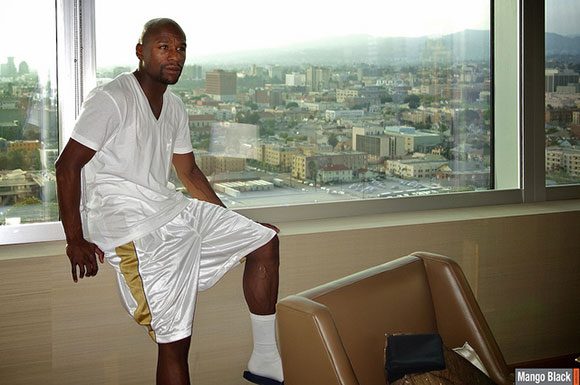When Floyd Mayweather Jr. defeated Canelo Alvarez to retain his junior heavyweight title last month, the majority of the fan interest was not in the fight itself.
Rather, much of the talk surrounded the fact that Mayweather was guaranteed $41.5 million US for the fight – win or lose. He also received a share of the pay-per-view revenues, which pushed his total earnings for the fight to over $80 million. Canelo, in comparison, earned $5 million.
It’s safe to assume most people would deem it rather unfair that a single person could earn $80 million for a 36-minute fight. While many fans may balk at the money Mayweather and other superstar athletes earn, a closer look suggests big-money salaries may indeed be justified.
“There’s so much more than just player performance [when evaluating their worth],” says Eric Macramalla, a sports lawyer and legal analyst for TSN. “There’s marketing and merchandising considerations, selling season tickets and suits, TV deals…all those factors go into signing a player. It goes far beyond just the athlete’s production.”
Eric Macramalla on player salaries
In Mayweather’s case, his fight against Canelo garnered roughly 2.5 million pay-per-view subscriptions at an average of $60 a pop. The fight sold out the MGM Grand arena in 24 hours, and generated roughly $200 million in total revenue. Canelo was an intriguing opponent, but had he been replaced by a boxer of similar talent, it likely would not have had a profound impact on fans’ interest in the fight. The majority of them were tuning in to see Mayweather, not Canelo.
So for somebody who almost single handedly generated $200 million in revenue for simply showing up, Mayweather’s cut doesn’t seem that outrageous.
LeBron causes stir
In the case of NBA great LeBron James, he caused a strong reaction among fans and the media when he recently declared he was underpaid. James earned $17.5 million last year from the Miami Heat.
Was James underpaid? Well, he was the ninth highest paid NBA player this past season despite being universally regarded as the league’s premier star. It should be noted that James chose to sign for roughly $13 million less than the NBA’s maximum contract allows in order to help the Heat financially. But even if were making the extra money, his argument would still be valid.
Since “taking his talents to South Beach” in 2010, James has led the Heat to three straight NBA Finals, winning back-to-back championships, including two playoff MVP awards. It’s no coincidence According to Forbes.com, Miami’s franchise value has increased by close to $300M from the time James arrived in 2010 until now.
Simply put, James helps his team win, winning attracts more fans, and that means more money for the team. But his revenue-generating powers also extend beyond his individual team. James is a global commodity, the type of superstar who generates interest in the NBA from fans around the world. This past year, he had the top-selling jersey of any player in the NBA. But despite all of this, he earned the same amount of money as his teammate, Chris Bosh, who signed an identical contract to James when he joined Miami the same year.
Bosh not worth the money
Bosh was once the premier player for the Toronto Raptors, and while his stats on the Raptors were good enough to warrant a max contract (when compared to the rest of the league), he was never the type of on-court talent, and marketable star that James is. That’s not to say Bosh hasn’t been a valuable contributor for Miami – he has. But his overall impact pales in comparison to that of James.
Bosh is just one of many examples of athlete’s who are vastly overpaid for the value they bring to their team. Compounding the issue is the fact that in most cases, these contracts are guaranteed. So even in cases where an athlete’s performance declines dramatically over the years, they still get paid every cent.
Bargnani a bust
The Raptors experienced this with Andrea Bargnani (recently dealt to the New York Knicks) when they signed him to a five year, $50-million contract in 2009. At the time, the deal seemed reasonable considering his age, on-court productivity, and the likelihood he would continue to improve. When Bosh left the team to sign with Miami, Bargnani, the former first overall draft pick in 2006, was expected to be the new face of the franchise. But just three seasons later, a combination of injuries, ineffectiveness and what many deemed a questionable attitude resulted in him being benched and frequently booed by Raptors fans.
Nevertheless, he earned $30 million over the last three seasons. Bargnani is one of countless examples of athletes who fail to live up to a large contracts. But where does the blame lie on the underachieving player?
“It’s up to management to analyze the situation carefully, to exercise impulse control, and make sure they broker the right deal for their franchise,” says Macramalla, “If a player prices themselves out of the market, they have to be willing to let him walk or deal with the potential consequences down the line.”
In the end, it’s not easy to determine what an athlete truly deserves. Some athletes will never be compensated for their true worth, while others make out like bandits despite subpar play.
Like it or not, it’s the way the sports world works.

